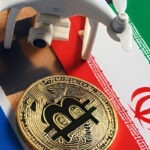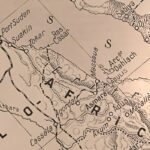It has been since the days of the diplomat Gan Ying and the adventurer Maes Titianus, the forgotten and lesser-known forerunners of Marco Polo, Ibn Battuta, and Matteo Ricci, that Central Asia has been the junction between the two shores of Eurasia.
The importance of this biogeographical region has increased over time, hand in hand with the transformation of the world into a global village and the intensification of intracontinental trade. The result is that the historic central station of the ancient Silk Road is, today, the crossroads of a plurality of trade routes that cross Eurasia from north to south, west to east, uniting markets from the four cardinal points. Reasons that require Italy to deepen its presence in the area and forge a "Marco Polo plan."
Central Asia in numbers
More than ten major international trade routes have at least one stop in Central Asia, and most of them pass through what is the region's economic engine: Kazakhstan. The most important routes, in terms of weight for Italy's and the European Union's import-export with Central Asia and the Far East, are certainly the routes framed in the Belt and Road Initiative projects, the Transcaspian, the Transafghana, the Trans-Asian Railway Bridge, the Middle Corridor, and the Lapis Corridor.
Sending products from Shanghai to Europe via Astana or Samarkand, and from there via Baku, saves an average of ten to fifteen days compared to traditional sea routes via Suez and Malacca. This is one reason why Central Asia is at the center of the foreign policy of a growing number of actors and has become part of integration and interconnection projects such as China's Belt and Road Initiative projects, the Eurasian Economic Union and the Organization of Turkic States.
But aside from geography, which makes Central Asia an unavoidable crossing point for anyone who wants to shorten the distance between west and east, there is more: geoeconomics. Indeed, the soil and subsoil of Central Asia contain some of the most sought-after treasures of our time: 825.8 trillion cubic meters of gas, 31.4 billion barrels of oil, more than one million tons of uranium, more than twenty-two thousand tons of gold, two-fourths of the entire planet's manganese, one-third of all chromium, one-fifth of all lead, 12.6 percent of zinc, 8.7 percent of titanium, 6 percent of copper, cadmium and aluminum, and 5 percent of cobalt and molybdenum. Partial numbers and percentages, certainly lower than reality, because new deposits await discovery in the five -stans and almost everything is to be mapped in Afghanistan.
The energy transition comes through Central Asia. Specifically Kazakhstan, which exports uranium for nuclear power plants and chromium for wind turbines, has the world's fifth-largest zinc reserves, is in the top-ten largest geological concentrations on the planet, and is in the top-twenty for copper, cadmium, and bauxite deposits.
Italy and Central Asia
Italy needs a Polo Plan for Central Asia, a region that geology and geography make strategic in the contexts of competition among great powers, globalization and the race for green transition. It would be the ideal stop, but not the terminus, of a journey that began in 2019 with the formation of the 5+1 dialogue.
Italy, so far, has operated in Central Asia in a haphazard manner, merely reaping what diplomats and businessmen sowed independently during the years of our decada perdida-the 2011-21 period. A control room could give more foresight and stability to Italy-Central Asia relations, thus guaranteeing more results from a quanti-qualitative point of view.
(Photo: Railway in Bajkonur, Kazakhstan - NASA/Bill Ingalls, public domain)
Geopolitical analyst, foreign policy consultant and author. Graduate in Area and global studies for international cooperation (University of Turin), educated between Italy, Poland, Portugal and Russia. Specialized in hybrid warfare, Latin American issues and post-Soviet space.









C’è un piccolo problema: gli Italiani non sanno fare i propri interessi. Se solo tutte le attività si fermassero per soli quattro giorni, manderemmo il governo criminale che abbiamo, a gambe all’aria…ma non accadrà. Il progetto sopra descritto non sarà perciò realizzabile.